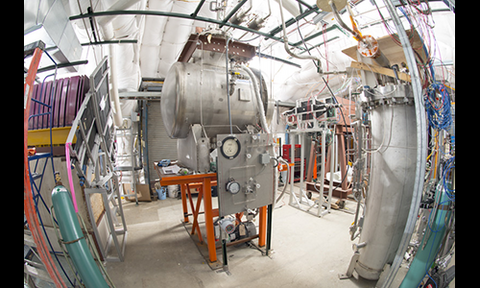
Matt King is a junior physics (intensive) major doing research with Prof. Bonnie Fleming. He was inducted into the Yale chapter of Sigma Pi Sigma this spring. He talks about his summer research with the Liquid Argon TPC in a Testbeam (LArIAT) collaboration at Fermilab.
“This summer, I am continuing a measurement with the LArIAT collaboration at Fermilab. LArIAT is a test beam experiment, meaning that it measures interactions from a beam of known particles, including, protons, electrons, pions, muons, and kaons. The results from LArIAT will calibrate this detector type (a Liquid Argon Time Projection Chamber, or LArTPC) for the upcoming DUNE neutrino experiment, which is a LArTPC that will be built in the next few years. My contribution is a measurement of the hadronic cross section of the pion absorption interaction in liquid argon, which will help to disentangle nuclear effects in neutrino interactions that involve a pion in the argon nucleus. I am using a Monte Carlo simulation to develop the selection algorithm for pion absorption candidates among all of the LArIAT particle events, and my goal is to apply the selection cuts to the data by the end of the summer to have a preliminary measurement result. Since this work is all computational, I am able to carry out this research remotely in my hometown.”
“Below is a picture of the Fermilab accelerator complex. It is far more interesting than a picture of me on my computer in my office :). The second picture is of the LArIAT experiment while it still took data in the Test Beam Facility (it stopped taking data in 2017).”

Additional background:
King has been working with Professor Fleming and Dr. Elena Gramellini, a Lederman Fellow at Fermilab, since Summer 2019 on the LArIAT experiment.
For the past year, King has been working on a measurement of the cross section of pion absorption in liquid argon using LArIAT data. Pions are a type of subatomic particle that can be produced when neutrinos interact with matter (in our case, liquid argon). Because our detectors can only measure charged particles, it is important to understand all of the charged final state products that can appear in a neutrino interaction, of which a pion is an example. Measuring this cross section, or interaction rate, of pion absorption will help to reduce the uncertainties on neutrino measurements, since we will better understand one of the interactions that occurs in neutrino events.


